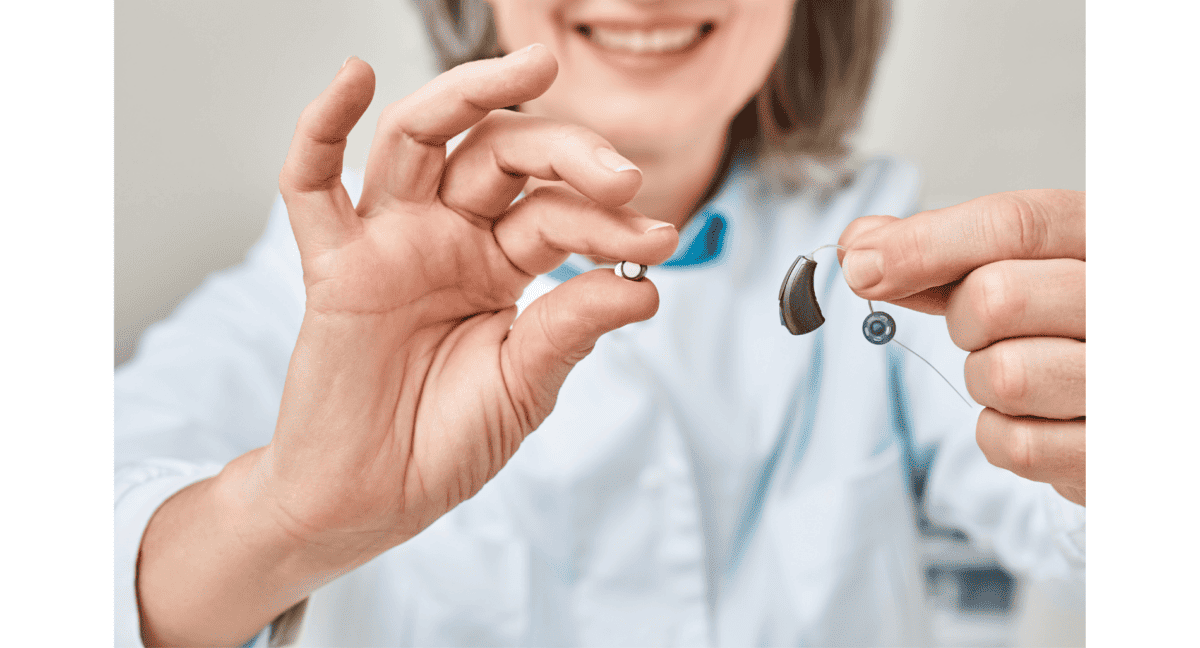Step into the world of sound, where the evolution of hearing aids echoes the resilience of human ingenuity and the pursuit of inclusive communication. The history of hearing aids is a remarkable journey spanning centuries, marked by innovation, creativity, and a deep understanding of the challenges faced by those with hearing loss.
Ancient Whispers: The Earliest Attempts
The quest to amplify sound for those with hearing loss can be traced back to ancient civilizations. One of the earliest known attempts dates back to the Etruscans in 400 BCE. They crafted hollowed-out animal horns, like those of a ram, to channel and amplify sound into the ear.
In the 17th century, the “ear trumpet” emerged as a popular aid. Crafted from various materials such as wood, metal, or animal horns, these devices captured sound waves and directed them into the ear canal. While rudimentary, these early hearing aids represented the first practical steps toward assisting individuals with hearing impairments.
Electric Dreams: The 19th Century Breakthrough
The 19th century ushered in a new era of innovation with the advent of electricity. The first electric hearing aid, known as the Akouphone, was introduced in 1895 by Miller Reese Hutchison. It used a carbon transmitter and batteries to amplify sound, providing a more effective solution than its predecessors.
Following this breakthrough, the carbon microphone was integrated into subsequent designs, allowing for improved amplification. The creation of the first wearable electronic hearing aid, the Vactuphone, in 1920 marked a pivotal moment in the history of hearing aids, offering greater portability and functionality.
The Transistor Era: Miniaturization and Mobility
The mid-20th century brought a revolutionary leap forward with the invention of the transistor. In 1952, the transistor hearing aid was introduced, marking the transition from bulky, unwieldy devices to more compact, portable solutions. Transistors replaced vacuum tubes, making hearing aids smaller, more reliable, and energy efficient.
The invention of the integrated circuit in the 1960s further propelled the evolution of hearing aids. These advancements allowed for the creation of behind-the-ear (BTE) and in-the-ear (ITE) models, offering users more discreet and comfortable options.
Digital Dawn: The 1980s Onward
The late 20th century witnessed the transformation of hearing aids into digital marvels. In 1987, the first commercially available digital hearing aid, the PHONAK VOCA, entered the market. Digital technology allowed for more precise customization, improved signal processing, and the ability to adapt to various listening environments.
The 21st century has seen continuous innovation, with hearing aids becoming increasingly sophisticated and user-friendly. Wireless connectivity, artificial intelligence, and smartphone integration have become standard features, offering users unprecedented control and adaptability.
Cochlear Implants: A Revolutionary Leap
While hearing aids addressed certain types of hearing loss, profound or severe cases required a different approach. Enter the cochlear implant, a groundbreaking technology that bypasses damaged parts of the ear and directly stimulates the auditory nerve. The first cochlear implant was successfully implanted in a patient in 1961 by Dr. William House. Since then, these implants have undergone significant advancements, allowing individuals with profound hearing loss to experience sound and speech.
The Human Touch: Personalization and Comfort
As technology advanced, a growing emphasis was placed on the user experience. Modern hearing aids are not just technical marvels; they are designed with the user in mind. Comfortable fits, sleek designs, and customizable settings cater to individual preferences, ensuring that wearing a hearing aid is a seamless and comfortable part of daily life.
Innovations on the Horizon
The journey of hearing aids is far from over. Current research and development efforts focus on enhancing the user experience even further. Artificial intelligence algorithms are being employed to adapt hearing aids in real-time to specific listening environments, while biometric sensors may provide valuable health-related data.
Additionally, researchers are exploring regenerative medicine approaches to restore damaged hearing structures. The potential for biological interventions offers hope for those with more profound hearing loss, pointing toward a future where the restoration of natural hearing becomes a reality.
Empowering Lives Through Sound
The history of hearing aids is a testament to human resilience and compassion. From humble beginnings with ear trumpets to today’s sophisticated, digitally enhanced devices, each step forward has been driven by a shared goal: to bring the world of sound within reach for everyone.
Hearing aids are not merely technological marvels, they are instruments of connection, allowing individuals to engage with their life in a whole new way. If you’re ready to learn more about modern hearing aids, book your next consultation.

